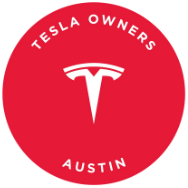- U.S. EV market share might remain steady in comparison to 2024, but market growth indicates a 3% increase in EV sales
- EV sales saw a 58% increase excluding direct sales from Tesla, Rivian, Lucid, and others
- California EV sales stayed relatively flat in 2024, but non-Tesla EV sales rose by 21%
- Policy uncertainties include EV tax credit, tariffs, emissions regulations, and charging infrastructure
Is the U.S. EV market still on an upward trajectory?
Yes, but there are several factors at play, including the decline in Tesla sales, the growing popularity of mainstream EV models, and potential changes under a Trump administration.
While the EV market may seem stagnant on the surface, there are significant developments happening beneath the surface. J.D. Power analysts recently revised their EV retail market share forecast to remain unchanged this year, with EVs accounting for 9.1% of the U.S. retail market.
J.D. Power attributed this to various challenges such as vehicle tariffs, relaxed emissions policies, the potential elimination of the EV tax credit, and the uncertainty surrounding federal funding for charging infrastructure. Despite these headwinds, J.D. Power still anticipates EV adoption to grow to 26% of the market by 2030.
Expanding Market and Mainstream EVs
In 2024, there was a 58% increase in what J.D. Power referred to as “franchise EV sales,” excluding direct-sales EV brands like Tesla, Rivian, and Lucid. These sales at traditional dealerships totaled 376,000 units.
With total vehicle sales expected to grow by 3% in 2025, a stagnant market share for EVs implies a proportional increase in their presence in the market. “We anticipate a stable retail share for EVs,” stated Tyson Jominy, J.D. Power’s VP of data and analytics. “EV sales will grow along with total sales.”
In 2024, EV sales by volume increased by approximately 7% compared to the previous year, reaching a total market share of around 8% in 2023.
Below Expectations EV Sales Growth
Although the EV market continues to expand in 2025, the growth is significantly lower than initial forecasts from analysts in early 2024. Previous predictions suggested EVs would capture a 13% market share in 2024, but the actual figures fell short.
Despite the subdued growth, there is optimism for future EV sales, especially with the introduction of more affordable models like the Chevrolet Equinox EV and Ford’s shift towards affordable electric vehicles.
However, the outcome of the November election brought about changes that could impact the EV market moving forward. Policy shifts, such as the potential removal of the EV tax credit, have led to fluctuations in EV sales, including a surge in the fourth quarter of 2024.
The Tesla Factor in California and Beyond
Tesla, once a dominant force in the EV market, experienced a decline in sales in 2024, both nationally and within California. Excluding Tesla from the equation reveals a different narrative, with non-Tesla EV sales in California rising by 21% in 2024.
While California remains a significant market for EVs, Tesla’s market share in the state decreased in 2024. The trend extended beyond California, with Tesla facing sales contractions nationally.
Elon Musk’s political involvement and policy alignment have influenced Tesla’s sales performance, raising questions about the company’s future growth trajectory.
As the EV market evolves in 2025, factors like policy decisions and consumer preferences will shape the landscape, indicating a shift away from Tesla-centric growth.

